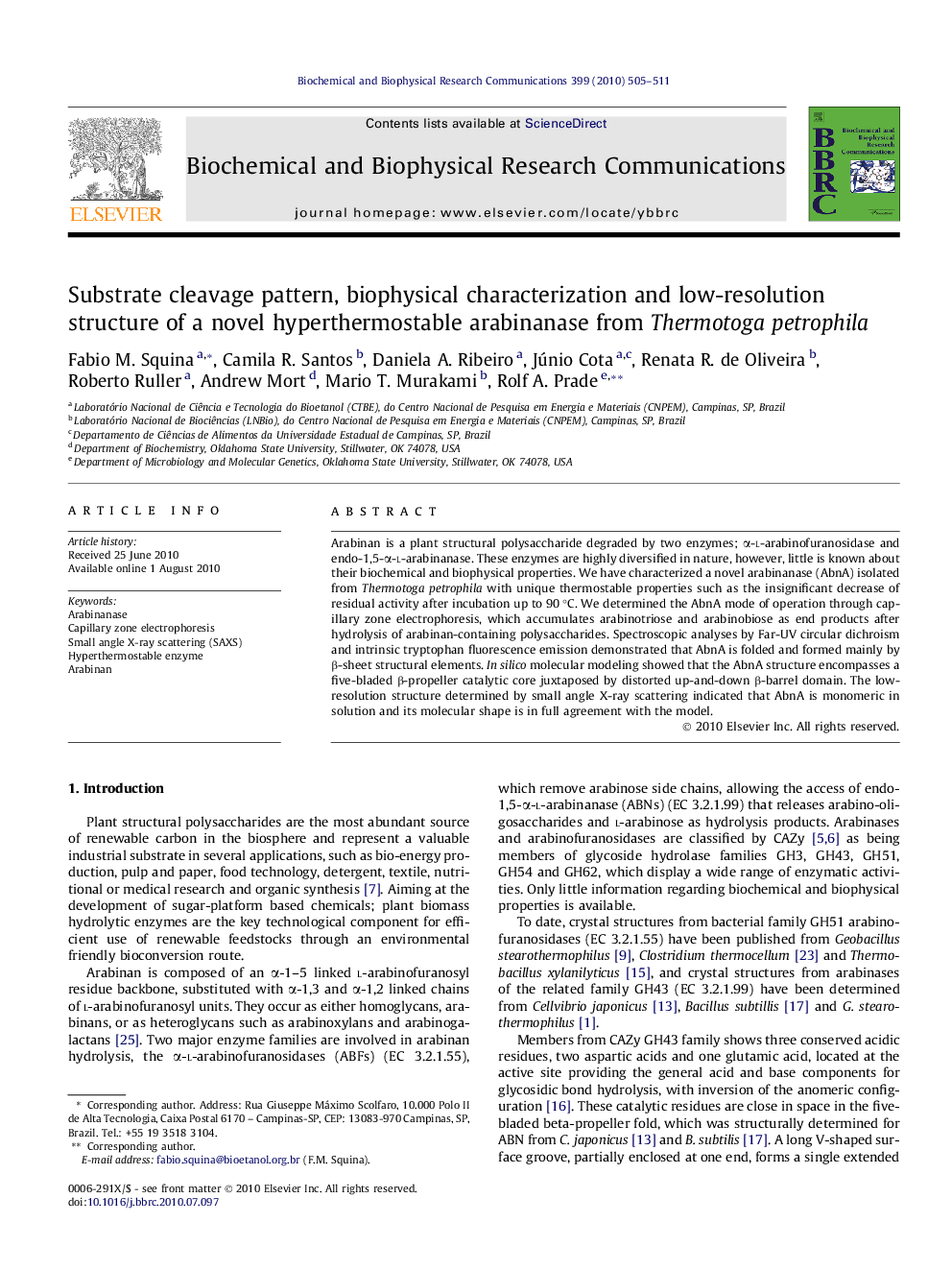| Article ID | Journal | Published Year | Pages | File Type |
|---|---|---|---|---|
| 1931640 | Biochemical and Biophysical Research Communications | 2010 | 7 Pages |
Arabinan is a plant structural polysaccharide degraded by two enzymes; α-l-arabinofuranosidase and endo-1,5-α-l-arabinanase. These enzymes are highly diversified in nature, however, little is known about their biochemical and biophysical properties. We have characterized a novel arabinanase (AbnA) isolated from Thermotoga petrophila with unique thermostable properties such as the insignificant decrease of residual activity after incubation up to 90 °C. We determined the AbnA mode of operation through capillary zone electrophoresis, which accumulates arabinotriose and arabinobiose as end products after hydrolysis of arabinan-containing polysaccharides. Spectroscopic analyses by Far-UV circular dichroism and intrinsic tryptophan fluorescence emission demonstrated that AbnA is folded and formed mainly by β-sheet structural elements. In silico molecular modeling showed that the AbnA structure encompasses a five-bladed β-propeller catalytic core juxtaposed by distorted up-and-down β-barrel domain. The low-resolution structure determined by small angle X-ray scattering indicated that AbnA is monomeric in solution and its molecular shape is in full agreement with the model.
Research highlights► Novel arabinan hydrolytic enzyme. ► High-temperature operating and thermostable endo-1–5-α-arabinanase. ► Determination of mode of operation of the recombinant enzyme along with biophysical insights over enzyme hyperthermophilicity. ► Low-resolution structure determination by small angle X-ray scattering of the enzyme.
